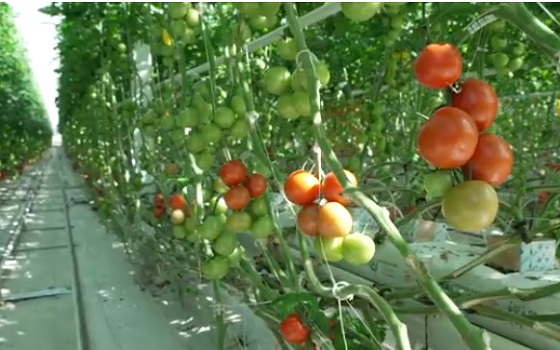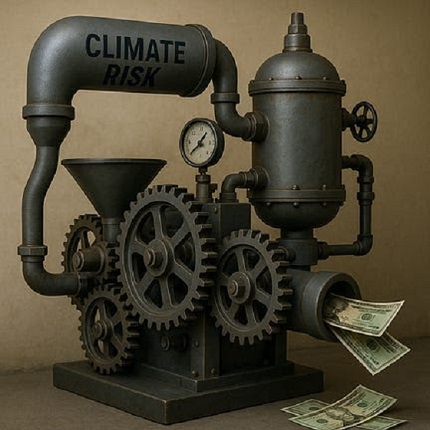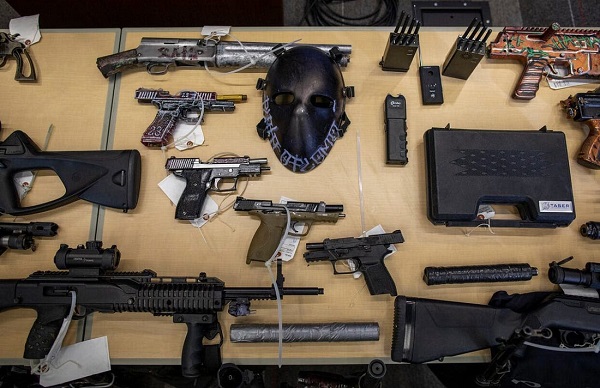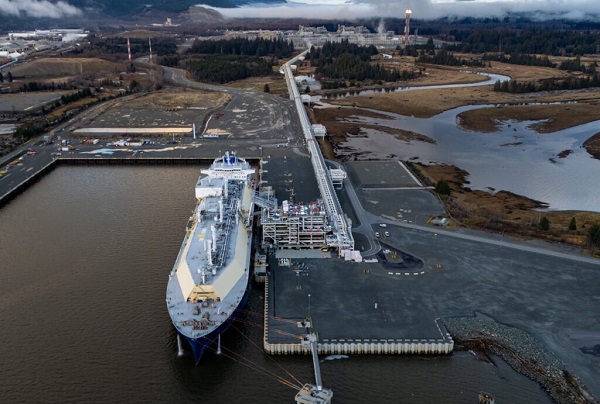Business
Canadian Taxpayer Federation calls on Ottawa to rescind recent Carbon Tax hike

From the Canadian Taxpayer Federation
Ottawa’s carbon tax hike out of step with global reality
by Aaron Wudrick, Federal Director and Franco Terrazzano, Alberta Director
(This column originally appeared in the Financial Post)
Prime Minister Justin Trudeau has chosen to make life more expensive by increasing the federal carbon tax by 50 per cent amidst the COVID-19 economic and health crisis. Meanwhile, governments around the world are moving in the opposite direction because hiking taxes during a global pandemic is a bad idea.
Provinces have already tapped the breaks on their own carbon tax hikes. British Columbia Premier John Horgan announced that he would not be going forward with his planned April 1 carbon tax hike. Instead of mirroring the federal carbon tax hike, Newfoundland and Labrador is maintaining its tax at $20 per tonne. The price of carbon allowances in the Quebec-California cap and trade system have also fallen due to COVID-19 and the current macroeconomic realities.
The European Union’s cap and trade scheme, which applies to 30 countries, has also seen its carbon tax rate drop significantly. For most of 2019 and early 2020, EU carbon prices traded around €25 per tonne before nosediving to around €15 per tonne in March. The EU’s cap and trade carbon tax rate has fallen 32 per cent below its 2020 peak, according to the most recent data available on the ICAP Allowance Price Explorer. While the tax rate has increased since bottoming out, S&P Global Platts Analytics forecasts the COVID-19 shock keeping downward pressure on the cap and trade market.
Other counties are providing further carbon tax relief. The Norwegian government reduced its carbon tax rate on natural gas and liquified petroleum gas to zeroand will keep the rates below the pre-coronavirus level until 2024. Norway also deferred payments on various fuel taxes until June 18.
Estonia Finance Minister Martin Helme formally called for his country to consider leaving the EU’s cap and trade carbon tax system to provide relief. The prime minister later announced that Estonia would not seek to leave the EU’s carbon tax system, but the Estonian government lowered the excise tax on electricity to the minimum allowed by the EU and lowered its excise tax on diesel, light and heavy fuel oil, shale oil and natural gas.
“Due to the economic downturn, both people’s incomes and the revenue of companies are declining, but daily household expenses such as electricity or gas bills still need to be paid. To better cope with them, we are reducing excise duty rates on gas and electricity for two years,” Helme explained.
Outside of the EU, the United Kingdom is saving its taxpayers between £15 and £20 million per year by walking back its plan to increase its carbon tax top-up, New Zealand’s cap and trade tax rate has fallen by more than 20 per cent this year and South Africa pushed back carbon tax payments by three months.
It’s worth noting that it’s unlikely Canada’s carbon tax will have any meaningful impact on global emissions. Only 45 countries (out of 195 countries worldwide) are covered by a carbon tax, and only 15.6 per cent of total emissions are covered by these carbon taxes, according to the World Bank. Furthermore, about half of the emissions covered by carbon taxes are priced below US$10/tCO2e – significantly lower than Canada’s federal rate and too low to make a difference.
With Canada only accounting for 1.5 per cent of global emissions, it’s easy to understand Trudeau’s acknowledgement that, “even if Canada stopped everything tomorrow, and the other countries didn’t have any solutions, it wouldn’t make a big difference.”
Now more than ever, Canadian taxpayers need relief. With carbon tax burdens declining around the globe during the COVID-19 crisis, walking back the recent carbon tax hike should be a no-brainer for our federal government.
Province of Alberta replies to Joe Biden’s promise to cancel Keystone XL
Local Business
Red Deer Downtown Business Association to Wind Down Operations

The Downtown Business Association (DBA) Board of Directors has made the decision to wind down the Association’s operations at the end of 2025.
The Board determined that the Association is no longer able to operate sustainably under the financial framework available for 2026. After exploring all reasonable alternatives, the Board concluded that it could not continue without reducing services to a level that would no longer provide meaningful value to levy-paying businesses.
The DBA does not receive any operating funding from City Hall in a regular year, all funds raised are through Business Improvement Area Levy that consists of a mandatory levy placed on all businesses operating within the Business Improvement Area. These funds are legislated under the Municipal
Government Act, to be used to promote the Business Improvement Area, which is achieved through marketing and event initiatives along with providing advocacy support primarily to local government on behalf of the business community.
In recent years, the DBA has been a committed advocate for re-examining the approach to Downtown Governance. The Board has consistently maintained that the responsibility for funding downtown initiatives in such a socially charged environment should not rest solely with the business community.
Despite their efforts, the DBA recognized that the funds generated through the Business Improvement Area Levy were insufficient to effectively address the growing challenges of the current operating environment. This ongoing financial strain highlighted the need for a more equitable and sustainable
model to re-establish the downtown as a safe and welcoming heart of the city.
At the annual DBA budget presentation to City Hall, the DBA requested the essential funding needed to implement the Greater Downtown Governance Committee’s recommendations — work that the DBA is uniquely positioned to lead and has been delivering despite depleting resources for many years. The request was not approved. Instead, The City offered a one-time $100,000 Grant-in-Lieu, paired with a proposed 60% increase to the Business Improvement Area levy in 2026.
After careful analysis, the Board concluded that increasing the levy would place undue strain on already challenged businesses and compromise the DBA’s role as a trusted advocate. Operating with the reduced funding of $225,000 would require further staff reductions in an already under resourced environment and a significant reduction in programs, making it impossible to deliver the level of support that downtown businesses deserve and vitally need.
Beginning January 1, 2026, the City of Red Deer will become the primary contact point for matters previously supported by the DBA, including downtown support programs, business-district coordination, events, safety and cleanliness support, and stakeholder engagement. The DBA will work with City staff to support a smooth transition.
The DBA will continue to provide Clean Team services through the delivery of the City-funded environmental contract until February 1st, 2026.
Quote from CEO, Amanda Gould:
“To our business community, we have always operated with your best interests in our heart, continually driving the vision of a thriving downtown environment that serves every member of our community. The changes ahead will have a significant impact on downtown, as there will no longer be an organization dedicated to ensuring the downtown remains top-of-mind, leading events, marketing initiatives, or advocating on your behalf. It is likely you will experience less coordinated support and collective representation.
After 13 years of service to you and our beautiful downtown, it is with great personal sadness that we find ourselves here, but our message remains clear – addressing the unique challenges of our downtown should not rest solely on your shoulders. We cannot, in good faith, collect a levy that does not enable us to provide the essential services needed for our evolving downtown landscape”.
Quote from DBA Board Chair, Brandon Bouchard:
“The incredible staff at the Downtown Business Association have consistently delivered on their mandate with outstanding dedication and effectiveness. Through their efforts, they have successfully promoted the downtown area, organized impactful marketing and event initiatives, and provided steadfast
advocacy support for the business community. Their work has extended well beyond the legislated requirements, as they have proactively responded to the evolving needs of downtown businesses, adapting to challenges and supporting operations within a complex and changing environment.
Despite the staff’s relentless commitment to positioning the DBA as an effective leader for downtown interests, the absence of a sustainable funding model has made it impossible to continue delivering meaningful support. The Board cannot, in good conscience, propose a levy that does not enable the
Association to meet the required level of service, address the shifting priorities of the business community, or respond to the continually evolving needs of the downtown”.
Agriculture
Growing Alberta’s fresh food future

A new program funded by the Sustainable Canadian Agricultural Partnership will accelerate expansion in Alberta greenhouses and vertical farms.
Albertans want to keep their hard-earned money in the province and support producers by choosing locally grown, high-quality produce. The new three-year, $10-milllion Growing Greenhouses program aims to stimulate industry growth and provide fresh fruit and vegetables to Albertans throughout the year.
“Everything our ministry does is about ensuring Albertans have secure access to safe, high-quality food. We are continually working to build resilience and sustainability into our food production systems, increase opportunities for producers and processors, create jobs and feed Albertans. This new program will fund technologies that increase food production and improve energy efficiency.”
“Through this investment, we’re supporting Alberta’s growers and ensuring Canadians have access to fresh, locally-grown fruits and vegetables on grocery shelves year-round. This program strengthens local communities, drives innovation, and creates new opportunities for agricultural entrepreneurs, reinforcing Canada’s food system and economy.”
The Growing Greenhouses program supports the controlled environment agriculture sector with new construction or expansion improvements to existing greenhouses and vertical farms that produce food at a commercial scale. It also aligns with Alberta’s Buy Local initiative launched this year as consumers will be able to purchase more local produce all year-round.
The program was created in alignment with the needs identified by the greenhouse sector, with a goal to reduce seasonal import reliance entering fall, which increases fruit and vegetable prices.
“This program is a game-changer for Alberta’s greenhouse sector. By investing in expansion and innovation, we can grow more fresh produce year-round, reduce reliance on imports, and strengthen food security for Albertans. Our growers are ready to meet the demand with sustainable, locally grown vegetables and fruits, and this support ensures we can do so while creating new jobs and opportunities in communities across the province. We are very grateful to the Governments of Canada and Alberta for this investment in our sector and for working collaboratively with us.”
Sustainable Canadian Agricultural Partnership (Sustainable CAP)
Sustainable CAP is a five-year, $3.5-billion investment by federal, provincial and territorial governments to strengthen competitiveness, innovation and resiliency in Canada’s agriculture, agri-food and agri-based products sector. This includes $1 billion in federal programs and activities and $2.5 billion that is cost-shared 60 per cent federally and 40 per cent provincially/territorially for programs that are designed and delivered by provinces and territories.
Quick facts
- Alberta’s greenhouse sector ranks fourth in Canada:
- 195 greenhouses produce $145 million in produce and 60 per cent of them operate year-round.
- Greenhouse food production is growing by 6.2 per cent annually.
- Alberta imports $349 million in fresh produce annually.
- The program supports sector growth by investing in renewable and efficient energy systems, advanced lighting systems, energy-saving construction, and automation and robotics systems.
Related information
-

 Health2 days ago
Health2 days agoThe Data That Doesn’t Exist
-

 Business1 day ago
Business1 day agoCanada Can Finally Profit From LNG If Ottawa Stops Dragging Its Feet
-

 Business2 days ago
Business2 days agoThe Climate-Risk Industrial Complex and the Manufactured Insurance Crisis
-

 Crime2 days ago
Crime2 days agoInside the Fortified Sinaloa-Linked Compound Canada Still Can’t Seize After 12 Years of Legal War
-

 National2 days ago
National2 days agoLiberal bill “targets Christians” by removing religious exemption in hate-speech law
-

 Automotive11 hours ago
Automotive11 hours agoThe $50 Billion Question: EVs Never Delivered What Ottawa Promised
-

 Energy1 day ago
Energy1 day agoLNG NOW! Canada must act fast to prosper in changing times
-

 Health1 day ago
Health1 day agoUS podcaster Glenn Beck extends a lifeline to a Saskatchewan woman waiting for MAiD






